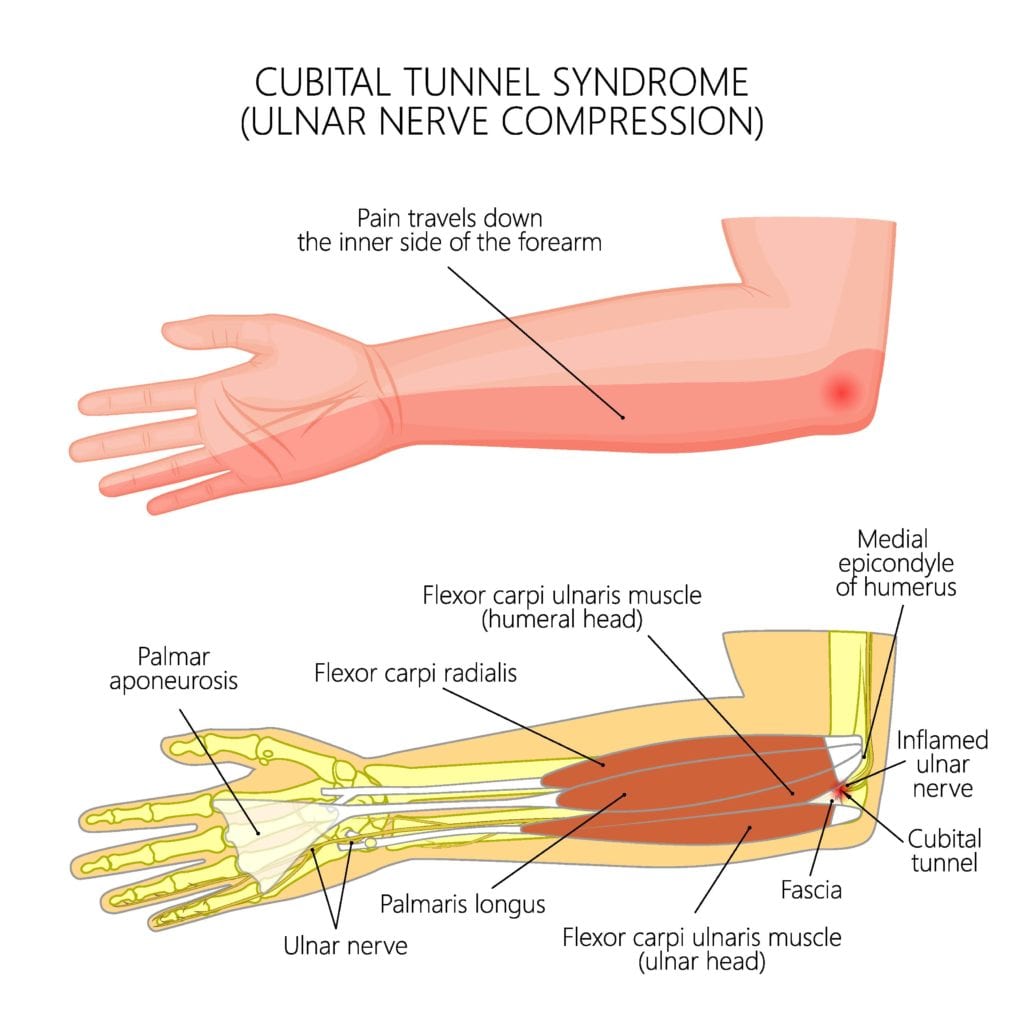I was reminded recently of how sever elbow pain caused by ulnar nerve irritation, also known as Cubital Tunnel Syndrome, can be when I saw a patient recently with the condition. The patient presented with a recent onset of left elbow pain, burning, and tingling radiating down the left arm with numbness to the last two fingers of the hand.

What is Cubital Tunnel Syndrome?
This condition occurs when the ulnar nerve that passes superficially through a groove along the inside of the elbow (medial epicondyle) is compressed. Patients present with pain along the inside of the elbow and telltale numb and tingling symptoms that radiate down the arm to the last two fingers of the hand. The ulnar nerve is also irritated temporarily when the “funny bone” is hit and a shocking sensation occurs when the ulnar nerve is bumped in the groove. There may also be muscle weakness to the affected muscles of the forearm and hand and pain with use of the hand and wrist and repetitive use activities.

What causes ulnar nerve irritation or elbow pain?
Cause of this condition can be unknown but is often due to prolonged flexion and repetitive use of the elbow, forearm and hand including heavy lifting and straining, gripping and twisting with forearm and hand. Patients may also have a history of trauma such as falling on the elbow, and many patients with a hypermobility condition of connective tissue called Ehlers Danlos Syndrome may be more susceptible to this condition. The mechanism of injury is usually due to the ulnar nerve being stretched around the medial condyle of the elbow with flexion, causing irritation and injury.
What are the treatment options for elbow pain and this condition?
Treatment to start usually consists of resting the joint, use of anti-inflammatories or oral steroids, and possibly Physical Therapy. If symptoms continue then ultrasound guided injections may be performed around the ulnar nerve where it lives in the groove to reduce inflammation. If injections only offer temporary improvement of symptoms, other traditional treatment approaches include surgical transposition of the nerve where it is moved outside of the groove, although this has variable success.
There is emerging evidence that injections of platelet rich plasma around injured nerves encourage healing the nerve, alleviating pain and dysfunction. PRP is obtained by drawing blood peripherally from the arm and then processed to isolate a persons’ platelets in a lab. Platelets are intimately involved in the healing process when there is an injury by increasing blood flow and releasing factors called Cytokines that mediate the healing response. CHARM offers multiple regenerative options including PRP to alleviate pain and improve function. https://charmaustin.com/relieve-pain-and-repair-injury/platelet-rich-plasma-prp/
Michelle Hall, PA-C




